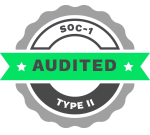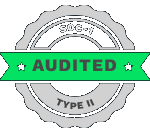Inefficiencies have plagued the medical fraternity for as long as we can recall. There seems to be an incomprehensible resistance to the adoption of newer systems and processes. This was true when doctors shied away from automation in surgeries, and this is true now. However, it is nonsensical that resistance may seem like it can’t be the status quo for long.
When IT 4.0 has the industry bustling towards the digital transformation story and the world is getting connected more than ever, the medical industry cannot stay far behind.
In this blog, we discuss the challenges that lie before the medicos and how the various use cases of MuleSoft data integration in healthcare solve those challenges.
Table of Contents:
- Challenges Before Healthcare
- Use Case 1: Secure, Free Flow of Patient Data
- Use Case 2: Compliance and Regulations
- Use Case 3: Standardization Across the Medical Value-Chain
- Use Case 4: Prior Authorization & Appointment Scheduling
- Use Case 5: Crisis Response
- Use Case 6: Diagnosis Accuracy
- Use Case 7: Population Health Management
- Why Should You Care For It?
Challenges Before Healthcare
Disparate Systems
Disconnected systems, wherever they are, pose a considerable threat to the communication ecosystem. The medical world is no exception to this. Legacy systems rendered obsolete with time are still used in hospitals, clinics, and other facilities. Such systems, unable to keep up with the advancements in modern technology, slow down the entire digital transformation cycle.
Siloed Patient Data
Data Silos are a major hurdle in the medical data interoperability. Even after recognizing the benefits of interconnecting data and processes, majority of health facilities have not been able to achieve interoperability. Less than 40 percent of health providers have embraced the importance of data sharing and integration.
Inefficient Clinical Workflows
Hospitals are laden with administrative processes that are often manual, paper-based, and time-consuming. These processes are also prone to errors and discrepancies. The overwhelming number of patients that any hospital sees is bound to face those inefficiencies. Healthcare Data Integration is a perfect cure for this.
Poor Patient Experiences
If you refrain from the latest advancements in technology and refuse to update your facility, your patients will bear the brunt of it. Patient care and experience depend on how personalized the treatment is, which is possible only with the adoption of automation, big data, and data integration platforms.
Use Case 1: Secure, Free Flow of Patient Data
Data is probably the gold of today. Its security and usage, when ensured, unlock the doors to bigger opportunities. Data integrity in healthcare is also crucial for effective medical data integration. A data integration software is essential for a secure and free flow of medical data.
Patient 360 Assets
As a healthcare provider, how do you make sure patients get what they expect of you? Gaining a comprehensive overview of the patient’s medical records, lifestyle, and social determinants of health is extremely important to offering a value-based care model.
Such goals can only be achieved with the unification of data from different sources. With the Patient 360 MuleSoft integration solution, organizations can accelerate ‘’data integration in healthcare’’ initiatives.
CMS Interoperability Assets
The CMS interoperability and patient access final rule includes policies that allow for the free flow of information between payers and providers without putting a burden on either of them.
This can be truly achieved in a world wherein resources encourage a free and secure environment for data exchange and analytics.
Use Case 2: Compliance and Regulations
Automating repetitive tasks such as manual data entry can help healthcare providers reduce both the cost and risk associated with it. Apart from mitigating the risks, it also reduces the burden on the medical staff to be 100 % accurate.
Labs Integration Assets
A great example of Healthcare Data Integration is Labs Integration Assets. It is a MuleSoft integration solution that enables hospitals to notify state health agencies about patients’ laboratory reports. An automated and secure process of health reporting, apart from helping with compliance, also opens possibilities for error-picking in the system.
Use Case 3: Standardization Across the Medical Value-Chain
Patients’ electronic health records are distributed across various data standards and formats. This is where interoperability comes in. MuleSoft integration tools help health facilities achieve it.
What it does is create a standard that is acceptable and followed by all the stakeholders (hospitals, clinics in this case). This improves both data accuracy and patient care outcomes, thereby doing better on readmissions.
Use Case 4: Prior Authorization & Appointment Scheduling
The inefficient clinical workflows can be handled if healthcare providers have a mechanism that reduces all the manual check processes, appointment scheduling, and clinician referrals. All this can be achieved with data integration software like mulesoft accelerator for healthcare and other such tools. No need for constant phone calls and emails.
Claim handling and cross-checking patients’ coverage can be done using Robotic Process Automation software. MuleSoft offers a whole bouquet of such services.
Use Case 5: Crisis Response
The COVID-19 pandemic tested the waters of the best health providers. The U.S., along with other developed economies, felt the need (more than ever before) for a connected medical ecosystem that could serve as a single source of truth for disparate systems.
They could not rely on disconnected data (which slowed down the delivery process) in the wake of a global crisis. Data integration in healthcare, at this point, absorbed most of the shock waves created by this never-seen-before crisis. Data integration tools helped combine data from various sources and store it in a cloud data warehouse, ensuring a free passage of data to and from the end users.
Use Case 6: Diagnosis Accuracy
An upwards of 80,000 Americans die every year because of inaccurate medical diagnoses. Diagnosis is a crucial part of the treatment procedure. Data integration in healthcare is required to gain a holistic view of the patient’s medical history and offer personalized care.
Instead of relying solely on Electronic Health Records (EHRs), medical practitioners can use medical data integration to analyze and provide correct diagnoses and deliver effective treatment.
Ready to Take Healthcare Delivery to The Next Level?
Use Case 7: Population Health Management
Healthcare organizations strive to gain clear visibility across the populations they serve. The recent pandemic has also urged governments and medical fraternities across geographies to seriously identify and analyze data to find patients who are more at risk of illnesses.
Data integration in healthcare allows for integration from disparate sources, medical databases, fitness devices, and mobile apps, leading to deeper insights into the general health of a populace or a demographic. Using this data, several predictive models can be designed, and proactive measures can be taken for the well-being of the population.
Recommended Reading:
Why Should You Care For It?
Why is there so much fuss about healthcare data integration, you ask? Well, the answer lies in the lessons learned after Covid-19. The world felt the need for a more efficient and interconnected health ecosystem. In the wake of Industry 4.0, automation and connectivity are at the forefront. Health systems cannot stay away from it (even if they choose to).
Sooner rather than later, they are going to fall in line. The ones who “snooze” will lose. In the words of Andrew Carnegie, “The first one gets the oyster, the second gets the shell.” We’re just saying, don’t be the second one.
BluEnt has taken it upon itself to do its bit for global well-being. We believe data integration in healthcare is a much-needed concept in the modern world. If we humans are to face pandemics (and we will) in the future, we might as well be prepared.
If you are looking to augment your business with MuleSoft data integration, we are always there for you. Feel free to reach out to us. Contact Us Now.












 The Power of Data in Enhancing Gift Card Customer Retention and Engagement
The Power of Data in Enhancing Gift Card Customer Retention and Engagement  Dell Boomi Integration Platform Explained: Architecture, Benefits, and Comparison with MuleSoft
Dell Boomi Integration Platform Explained: Architecture, Benefits, and Comparison with MuleSoft  Explainable AI (XAI): Bridge of Trust Between AI and Humans
Explainable AI (XAI): Bridge of Trust Between AI and Humans  How is the MuleSoft eCommerce Integration Platform Mitigating Retail Challenges?
How is the MuleSoft eCommerce Integration Platform Mitigating Retail Challenges? 
